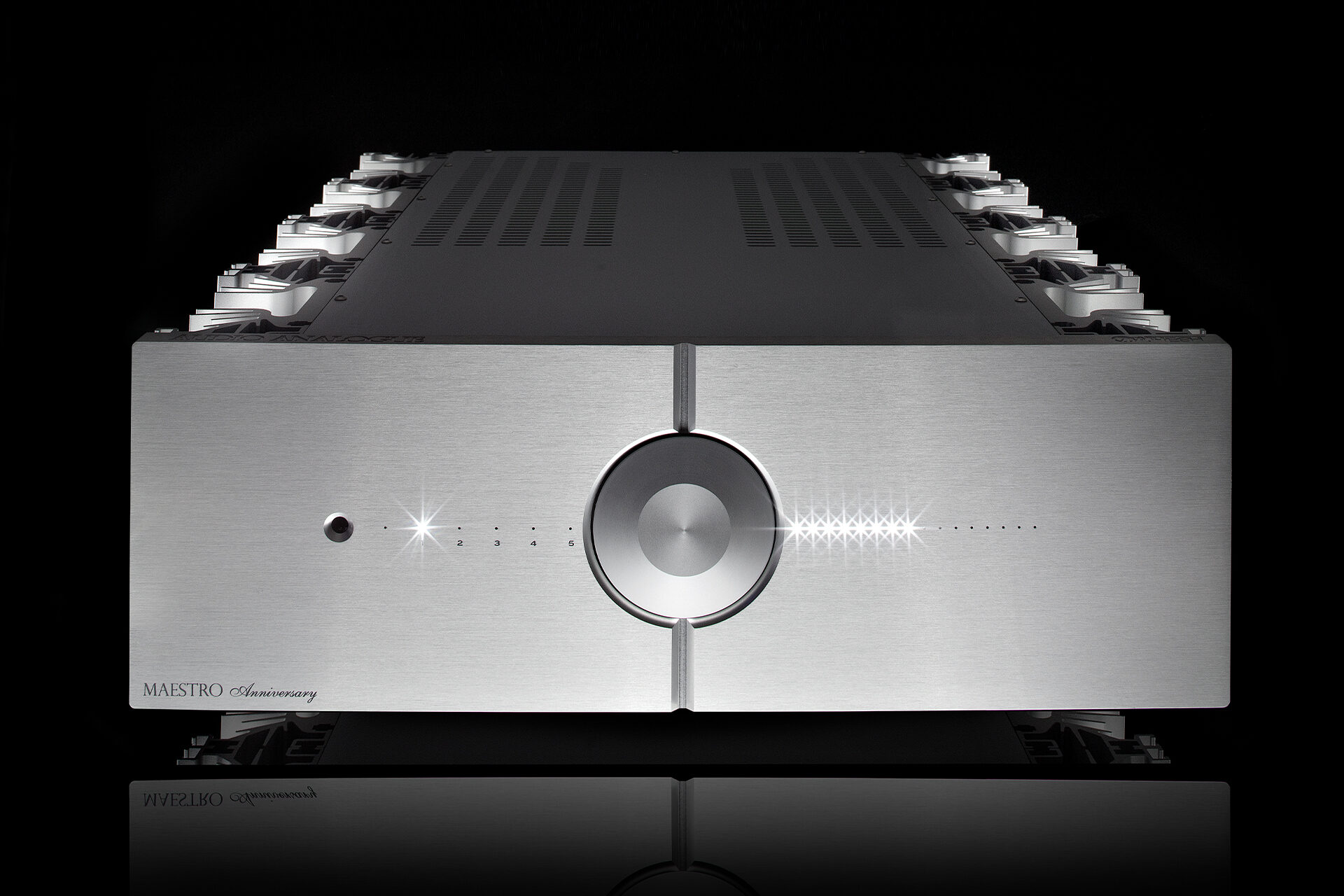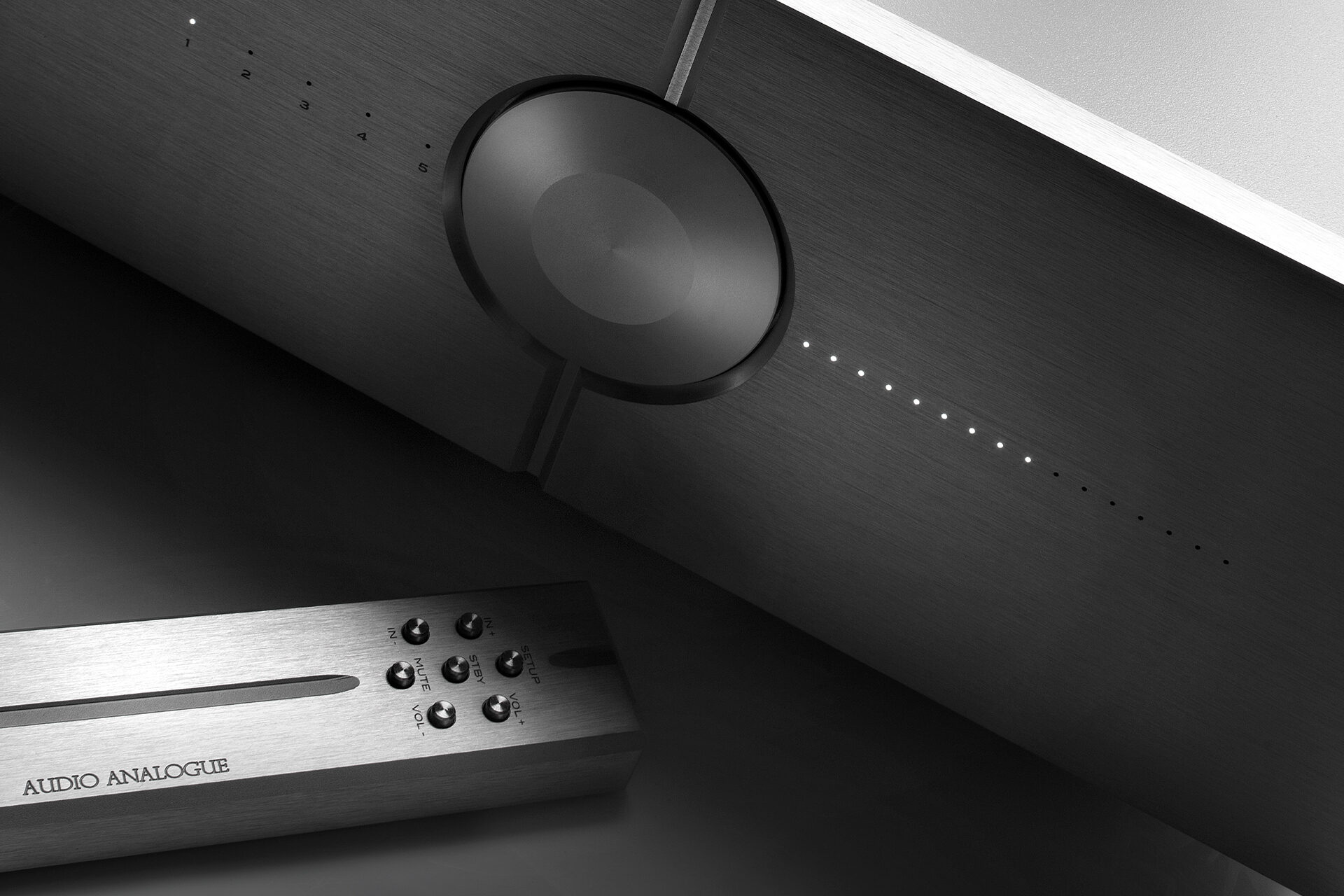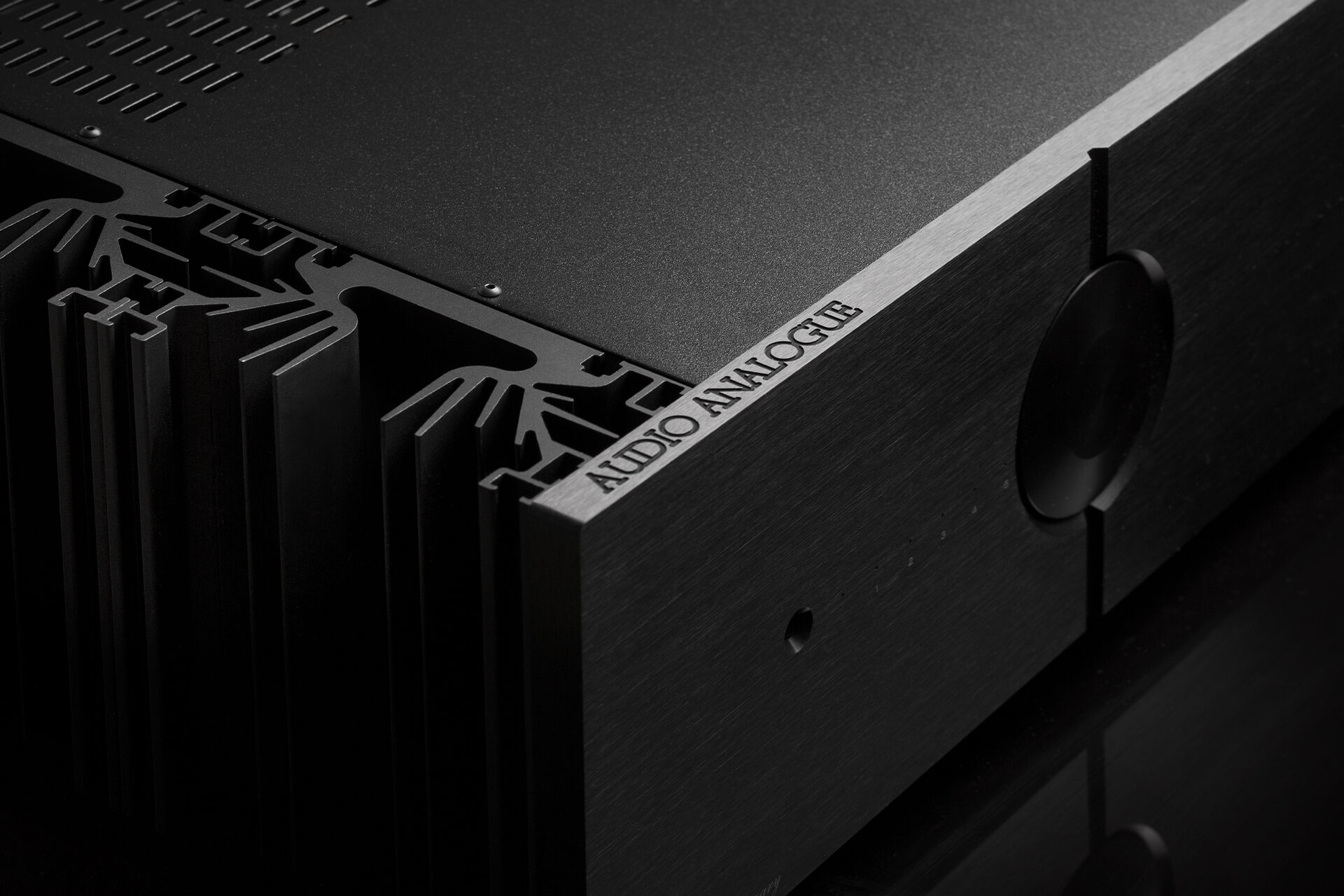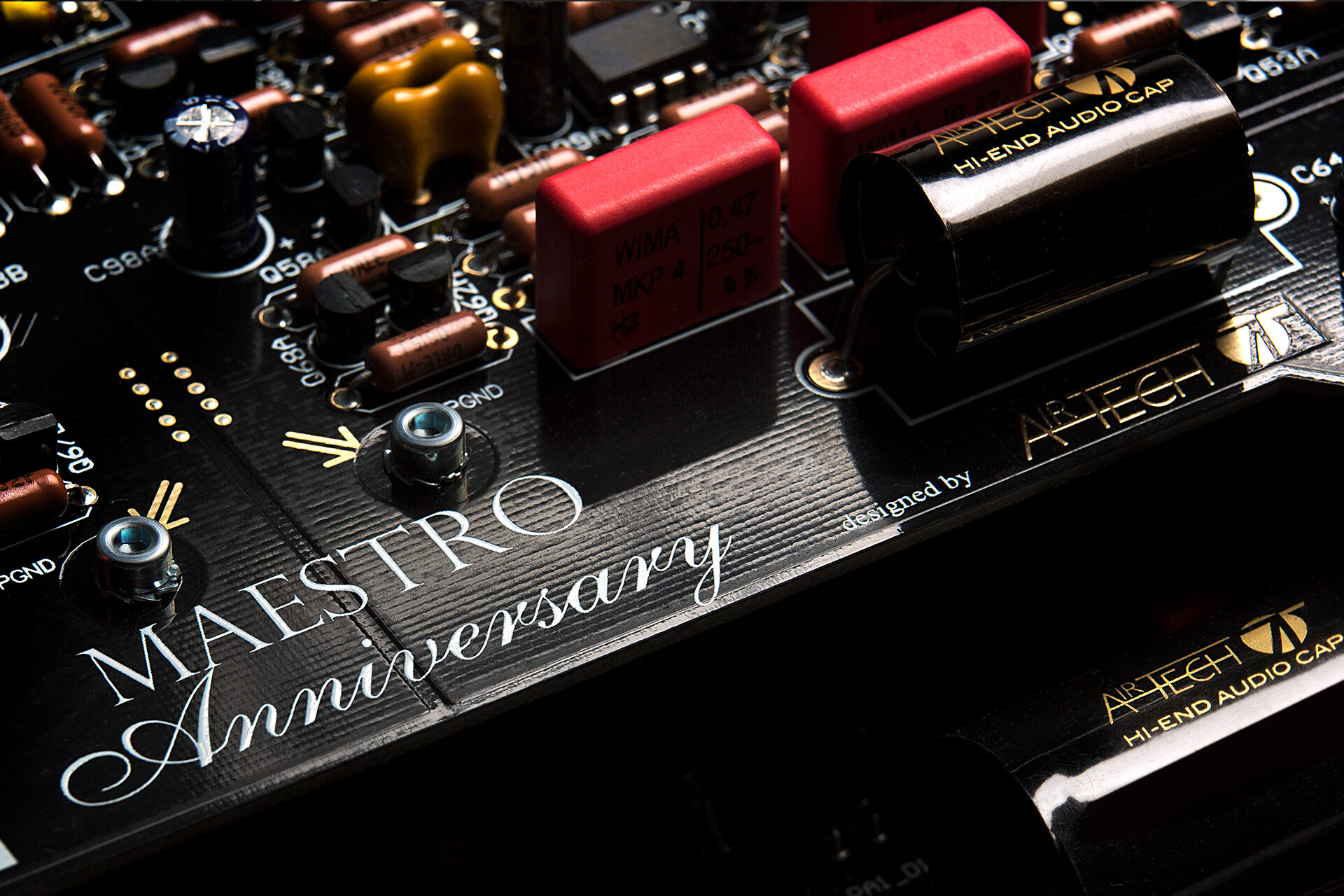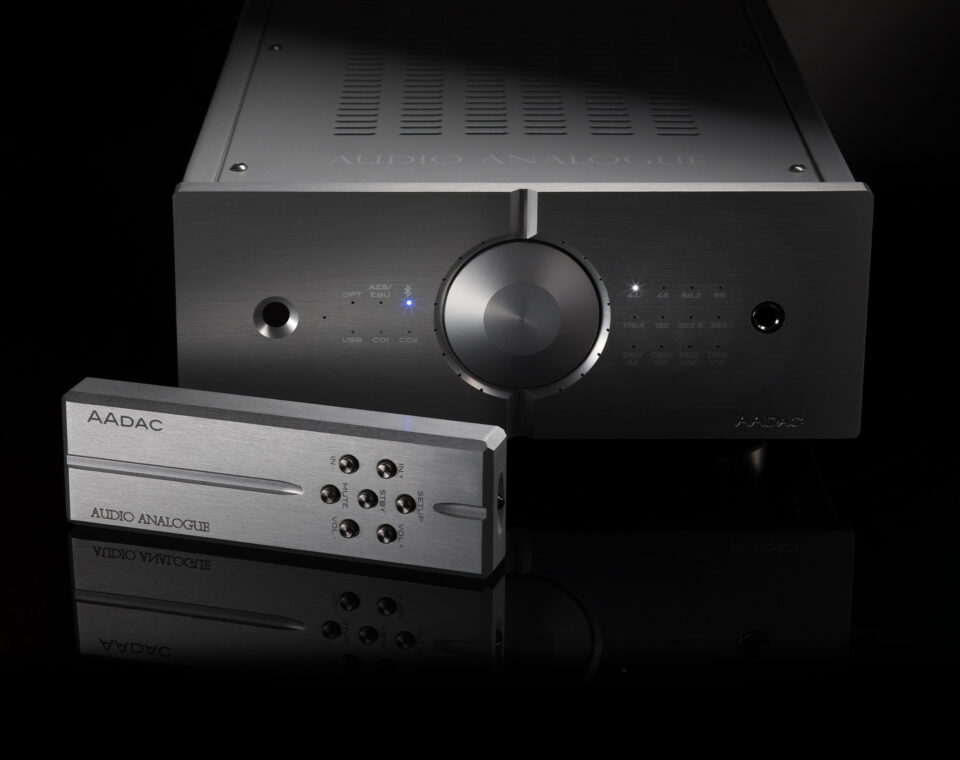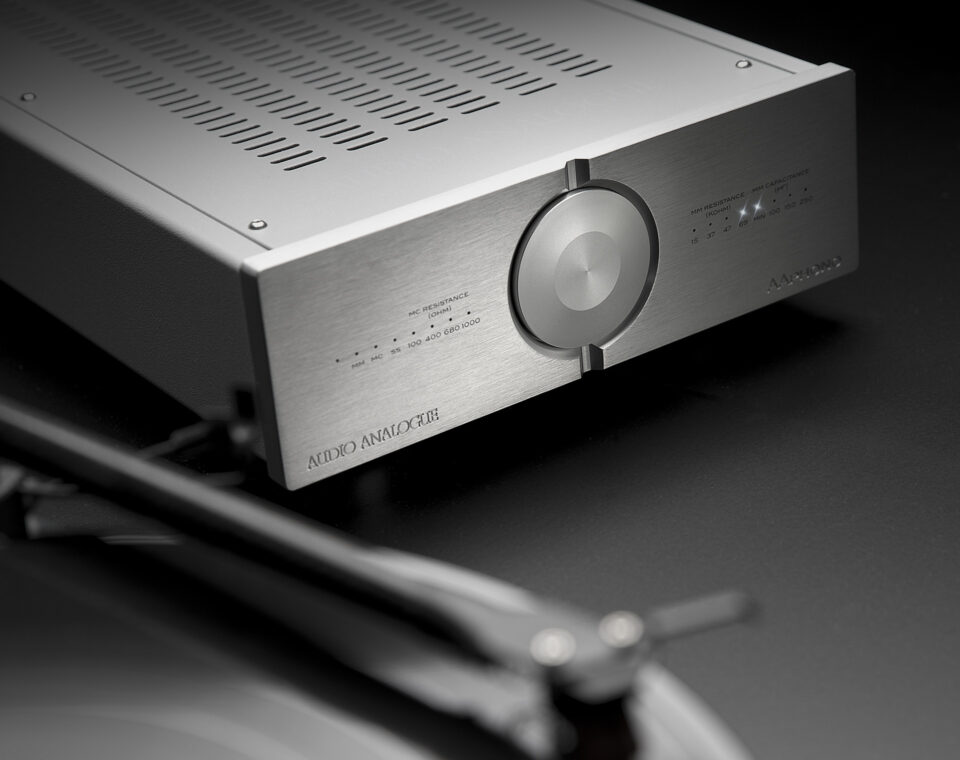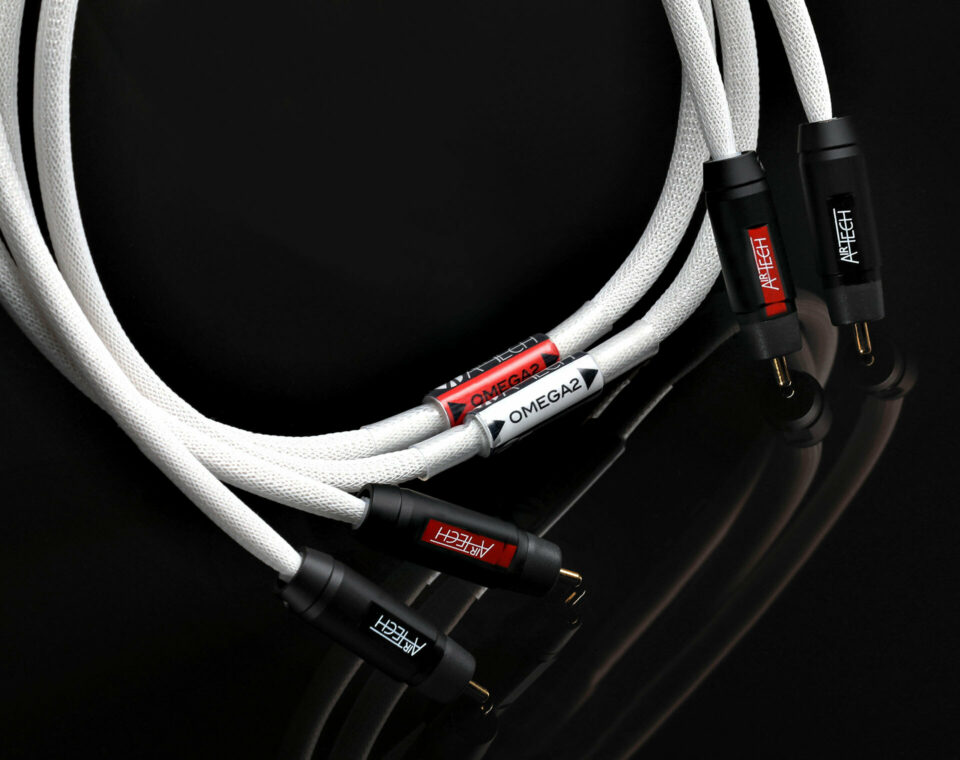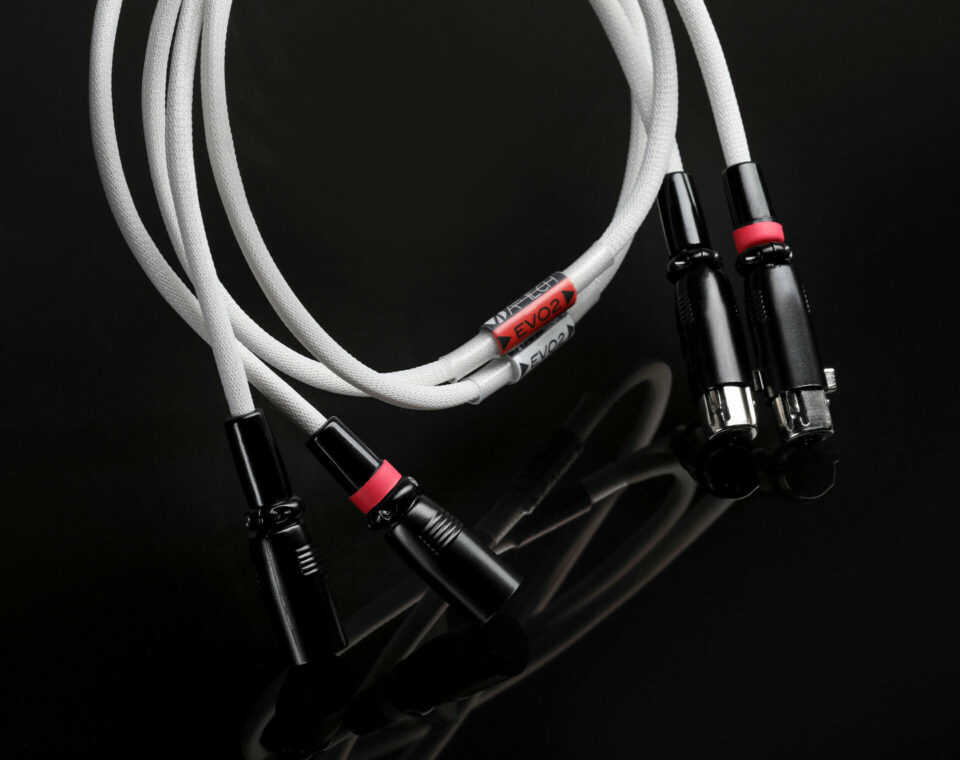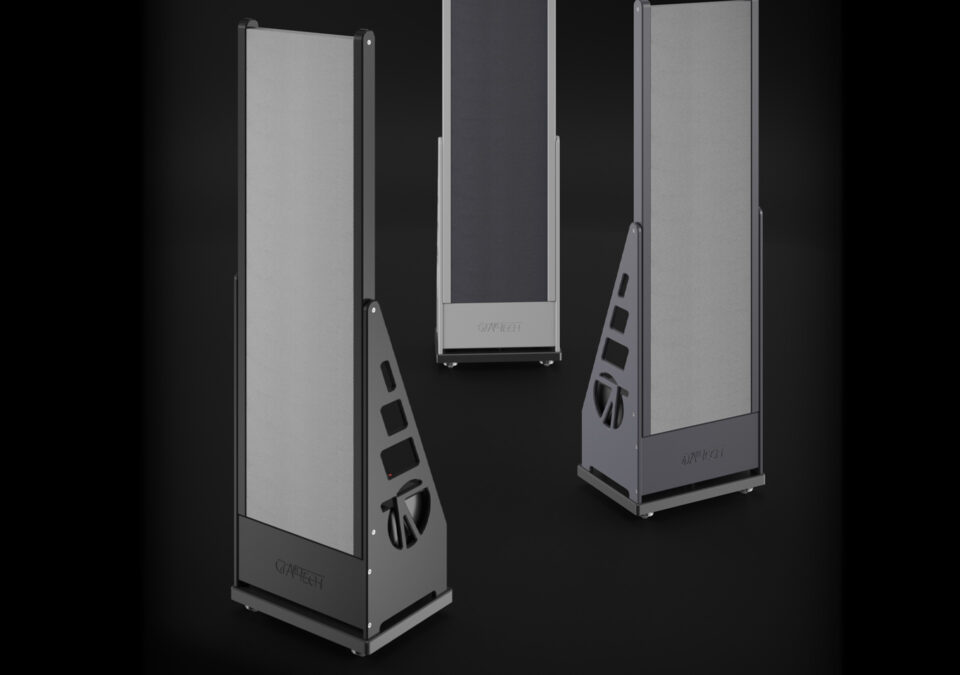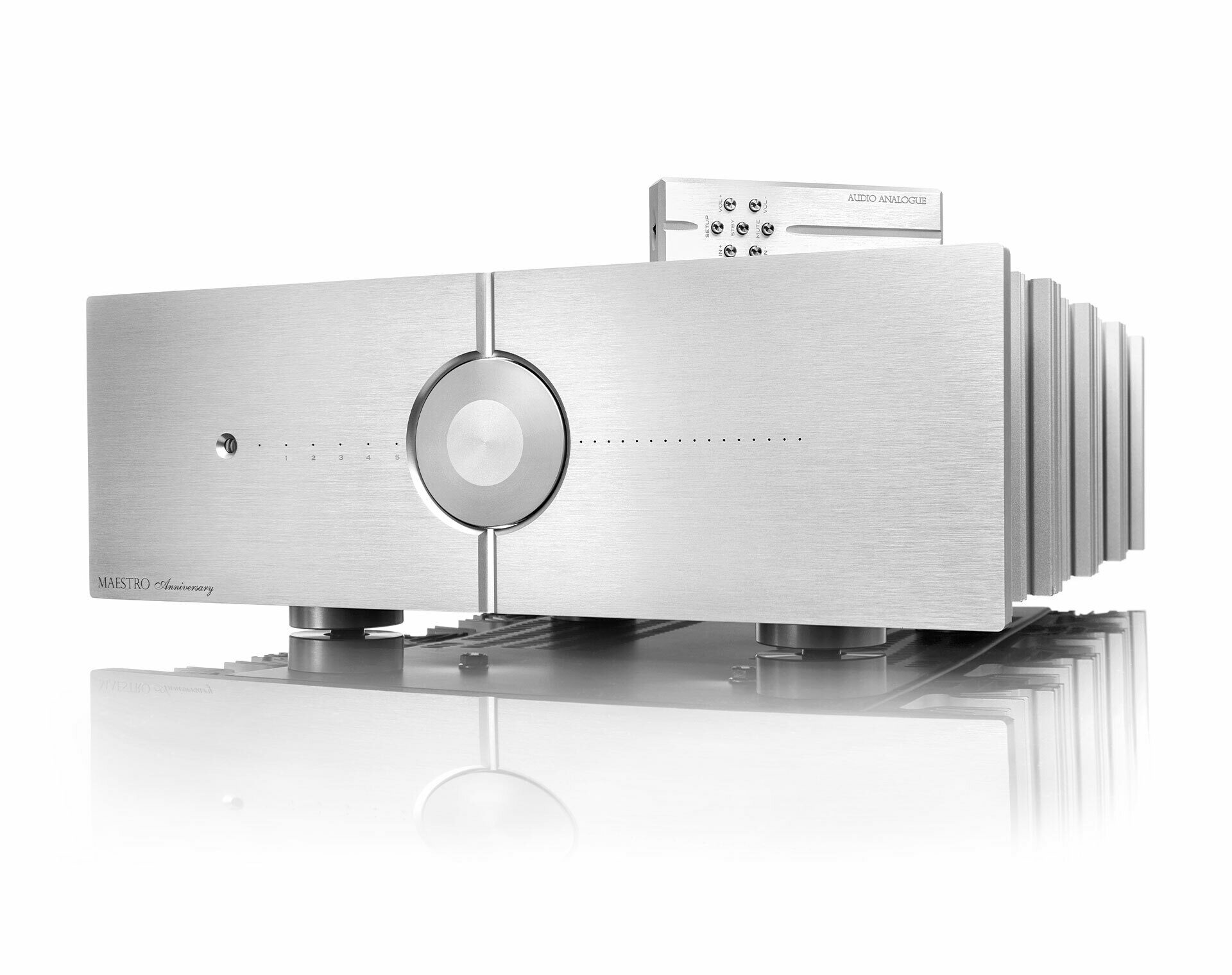
Anniversary
Maestro/Maestro RR
Integrated amplifier
The Maestro Anniversary was born in AIRTECH laboratories following the experience gained with the development of the Puccini Anniversary. The basic scheme is very similar but with one fundamental difference: the amplification chain is completely balanced by the input to the power stage and then unbalanced again to connect to the speakers. All of this results in a doubling of the amplification and attenuation stages.
Even in the Maestro Anniversary all the stages have zero global feedback. Feedback isn't used also in the preamp stages (as in the Puccini). The output power has been increased to 150W on 8Ω resulting in the downsizing of both driver and power stages that now use four transistor pairs per channel. However, the basic configuration remains as inverted cascode that is similar to a single gain stage followed by the output buffer.
The working point stability is maintained through a DC Servo that begins to work only at lower frequencies than a few tenths of Hertz (therefore totally out of the audio band). Such a refined circuitry, together with the selection of high quality components (military standard resistors, polypropylene audiograde capacitors made under AIRTECH specification, internal wiring with 7N OCC pure copper, pure copper gold plated output connectors) helped to create a device that has the honor of being the heir of the glorious Maestro Integrated.
The Maestro Anniversary is a unique device. Its remarkable power that doubles as the impedance decreases and its extraordinary driving skills are accompanied by a unique musicality and refinement not that easy to find in a such a "muscular" amplifier.
The Maestro Anniversary is a unique device. Its remarkable power and extraordinary driving skills go hand in hand with exceptional musicality and refinement.
Anniversary
Maestro/Maestro RR
Integrated amplifier
Technical
Description
The whole amplifier is designed as if it was made of three separate elements.
1- Power supply: made with a 600VA transformer for each channel. The bridge rectifier is made with ultra-fast discrete diodes of 50A each. The filtering capacity is 16800µF per branch so the amplifier has a total of 67200µf filter. At switch-on mode the electric current is limited by resistors variable with the temperature that right after are excluded from the signal path.
2- Amplifier: fully dual-mono for ground connections and power supplies too. The digital stages to control the volume chips are also optocoupled. The PCB copper tracks have a thickness double the standard to ensure the passage of large electricity currents. The PCB routing has been carefully studied to optimize the signal paths and maintain the symmetry of the stages.
3- Preamplifier: as for the amps, the preamp stages are dual-mono. Immediately behind the input connectors are placed the channel switching relays followed by a discrete component buffer to isolate the amplifier from the source. The maximum acceptable input voltage is about 6VRMS. The buffers, balanced on both inputs and outputs, drive in class A the four chips of volume for each channel. The latter, as in the case of the Puccini, are simply strings of resistances without any operational within them. This choice was made to have no kind of global feedback in the Maestro. After the volume control we have the real preamp stage that amplifies up to about 12db.
The three elements described above are physically housed on three separate boards so it’s like having a separate power supply, preamp and power amp.
The Maestro Anniversary is also available in RR version with analog volume attenuation based on relays and resistors for a further increase in the sound performance.
Available in natural aluminium and satin black.
Download the product PDFs
Technical
Specifications
Nominal output power at 8Ω
Attenuation 0dB, Bandwidth -3dB
Nominal output power at 2Ω/1kHz
Bandwidth limit 0Hz-80kHz/A weighted
230VAC
HxWxD

